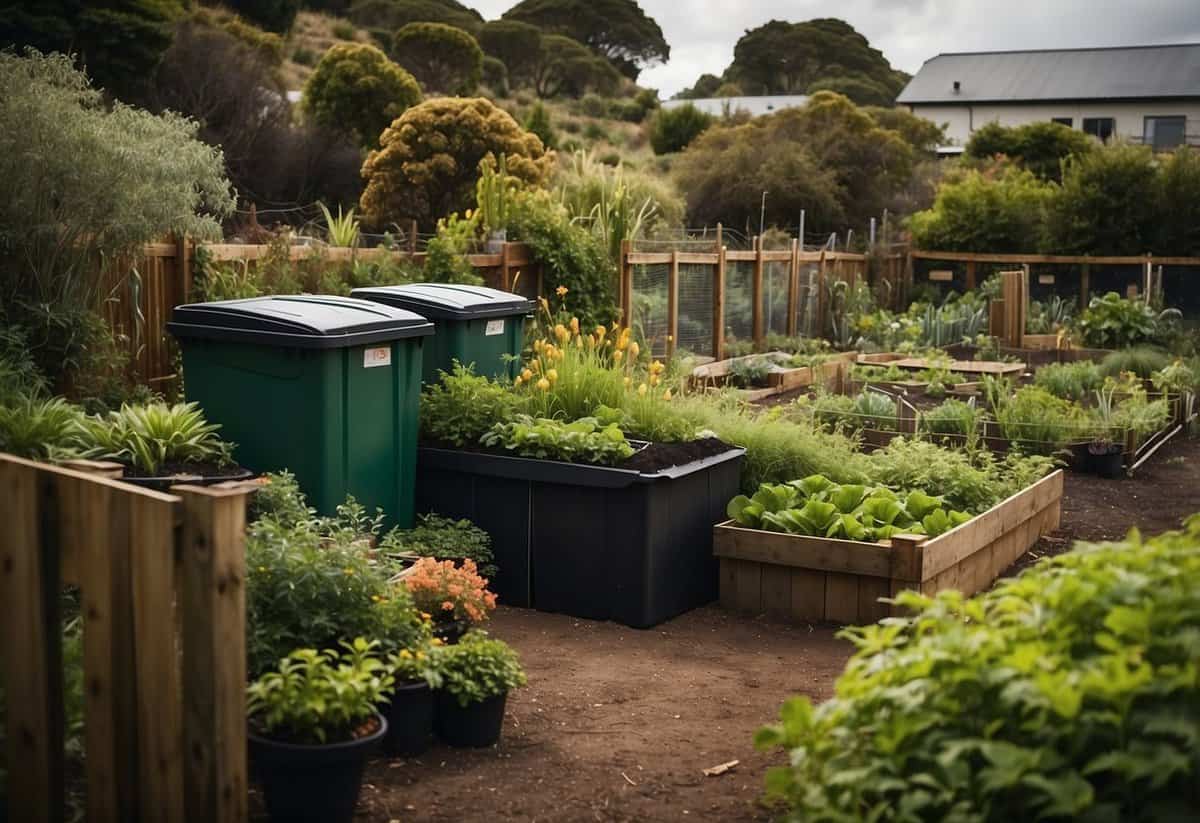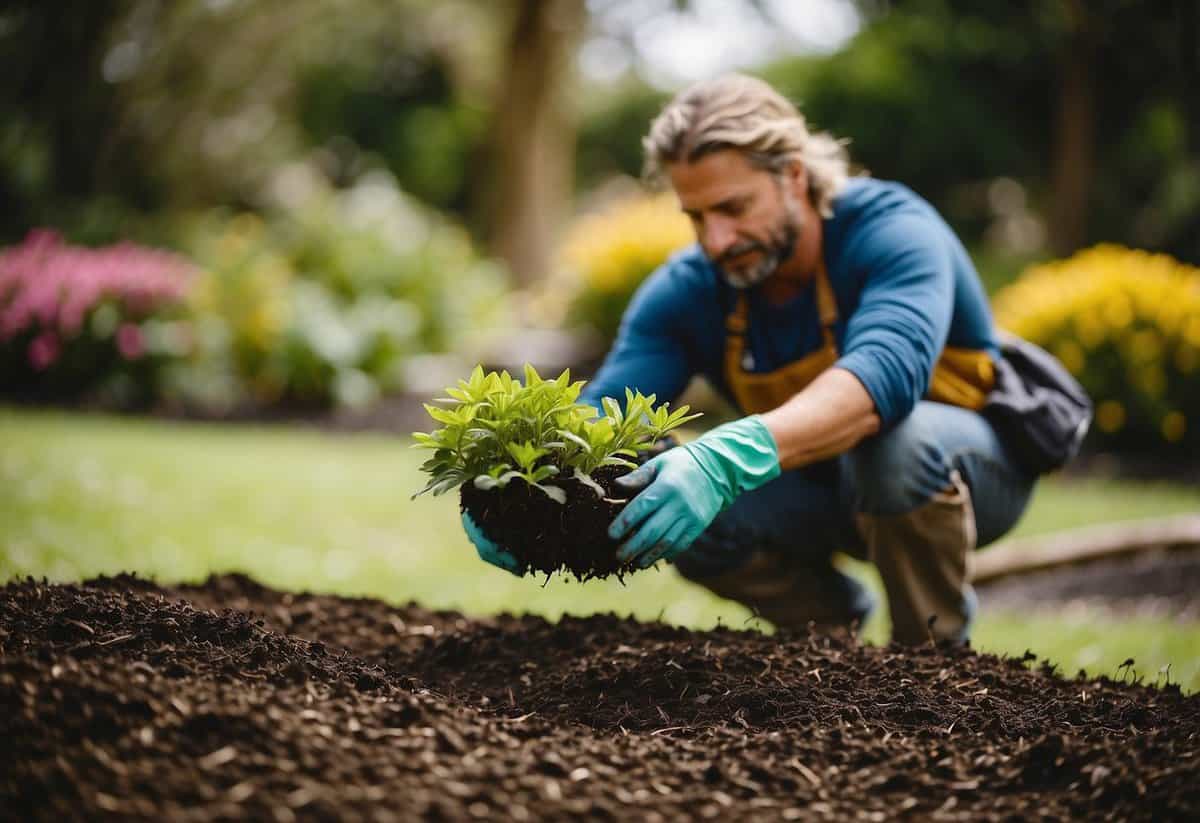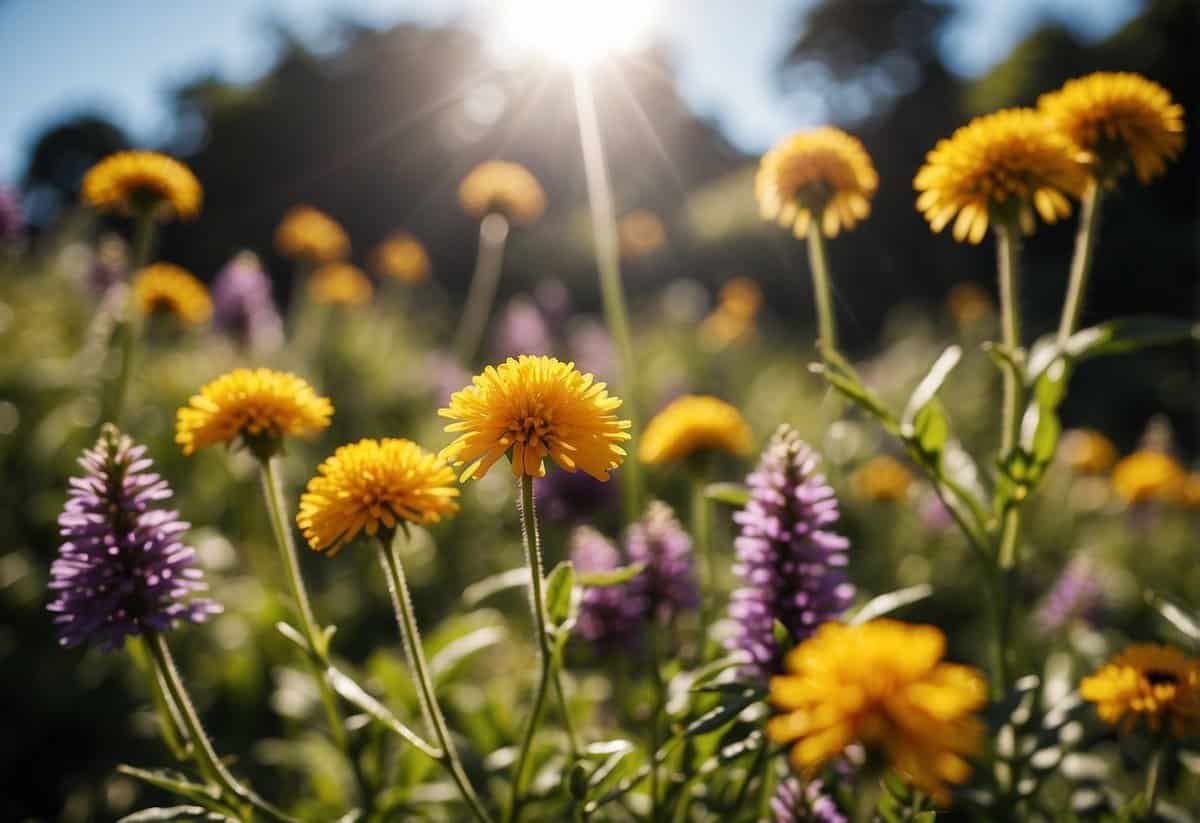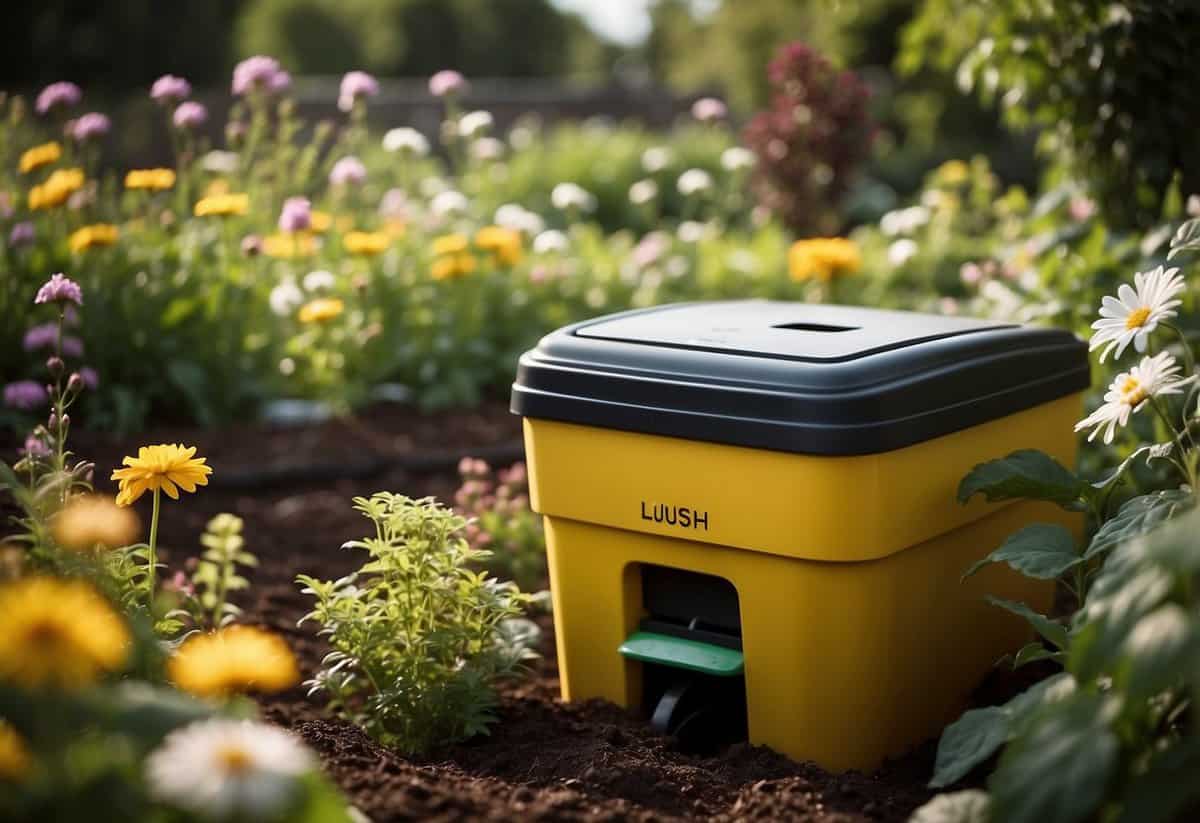Sustainable Garden Tips New Zealand: Eco-Friendly Practices for Kiwis
Gardening can be one of the most fulfilling activities, especially when you do it sustainably. In New Zealand, embracing eco-friendly practices in your garden not only helps the environment but also enhances the beauty of your outdoor space. Sustainable gardening practices contribute to a healthier ecosystem and create a thriving space for both plants and wildlife.

New Zealand’s unique climate and rich biodiversity offer an excellent opportunity to cultivate beautiful, sustainable gardens. By focusing on techniques that are kind to the planet, you can enjoy a lush, vibrant garden all year round. In this article, you’ll learn about simple yet effective tips to make your garden more sustainable.
1) Compost Bin Placement

Choose a sunny spot for your compost bin. Sunlight helps speed up the composting process.
Pick a location with good drainage. This prevents water from pooling around the bin.
Keep the compost bin close to your garden. It makes transferring compost easier.
Ensure it’s convenient for kitchen waste. Proximity to your kitchen encourages regular composting.
Avoid placing it directly against wooden structures. Compost can cause wood to rot.
2) Rainwater Harvesting

Rainwater harvesting is a great way to make your garden more sustainable. By collecting rainwater, you can reduce your reliance on mains water and keep plants hydrated.
Start by installing gutters and downspouts on your roof to direct water into storage tanks. Make sure to keep your roof and gutters clean to prevent contamination.
Store the collected rainwater in high-quality tanks. You can use simple strategies like utilizing opaque containers to prevent algae growth. Check filters regularly to ensure they are free from debris, allowing for smooth water flow.
By harvesting rainwater, you’re not only saving water but also helping the environment.
3) Native Plant Choices

Choosing the right native plants for your garden in New Zealand can make a big difference. Native plants are well-suited to the local climate and soil.
Consider plants like Kowhai and Pohutukawa. These can attract native birds to your garden.
For a splash of color, you can mix greys with purples or oranges. Libertia Peregrinans and Phormium Cookianum Purpurea work well together.
4) Mulch Application Tips

Applying mulch to your garden can make a big difference. First, clear the soil by removing weeds and debris. This prepares the area for maximum effectiveness.
Next, spread a layer of mulch about 2-4 inches thick. Thicker layers help suppress weeds and retain moisture. Make sure to keep the mulch a few inches away from the stems of your plants to prevent rot. Regularly top up the mulch as it breaks down to keep your garden healthy and looking great.
For more detailed information, you can check out this guide to garden mulch from Gardenscape.
5) Companion Planting Techniques

Companion planting can help you create a healthier garden. In New Zealand, you can plant celery with brassicas and beans. Celery helps these plants grow better.
Another great combination is carrots and leeks. Carrots protect leeks from pests, and leeks do the same for carrots.
Tomatoes work well with asparagus, basil, carrots, celery, and parsley. These companions support each other’s growth. For a useful guide, check out the Tui Garden Companion Planting Guide.
Marigolds are also valuable companions. They fit well with almost any plant, making them a versatile choice.
6) DIY Organic Fertilizers

Making your own organic fertilizers at home is simple and ecologically friendly. These DIY options will provide essential nutrients to your plants and improve soil health.
One great option is compost tea. Soak a shovel of compost in water to create a nutrient-rich liquid that feeds and waters your plants.
Another easy method is using banana peels. Just bury them near your plants. They provide potassium, essential for plant growth.
Eggshells can be useful too. Crush them and sprinkle around your garden to add calcium.
7) Bee-friendly Flowers

Bees love blue and yellow flowering plants. Mass planting these flowers helps bees spend less energy foraging.
Native plants like the New Zealand hebe are great choices. Fruit trees such as apple, pear, citrus, and plum are also excellent.
Herbs like borage, rosemary, lavender, sage, and thyme attract bees too.
For more ideas, check out tips on planting bee-friendly flowers.
8) Greywater Reuse Systems

Using a greywater reuse system can help you save water in your garden. Greywater is water from your sinks, baths, and showers. It can be treated and reused for garden irrigation and toilet flushing.
To keep your garden healthy, greywater should be discharged under the soil and not on top. Using greywater lowers the need for fresh water and reduces the load on sewerage systems.
Some systems, like Grey-Flow, are designed to filter and pump greywater efficiently. These systems meet health and plumbing standards in New Zealand and other countries.
9) Raised Bed Construction

Building a raised bed is a great way to grow your garden sustainably. Start with a design that suits your space. A bed that’s a metre wide and between 1 to 2 metres long is a good size.
Choose a sunny spot that’s protected from the wind. Make sure the area is flat, or level it out first.
For materials, use a combination of timber and corrugated iron for the sides. This helps collect heat from the sun and warms the soil, leading to earlier plant maturity. Learn more from My Garden.
Happy gardening!
10) Worm Farming

Worm farming is a great way to recycle food scraps into nutrient-rich compost for your garden. It involves keeping worms in a bin where they break down organic material.
Check your worm farm regularly for moisture and signs of overfeeding. It’s important to keep it moist and dark, using a worm blanket if needed.
If your farm smells bad, it might be due to uneaten food scraps. Stop feeding the worms and stir the scraps to aerate them. This helps to create a healthy environment for the worms. For more tips, visit Little Buddies.
Benefits of Sustainable Gardening

Sustainable gardening can greatly benefit both the environment and your personal health. These benefits make your garden more than just a place for plants; it becomes a haven for well-being and ecological balance.
Environmental Impact
Your sustainable garden contributes to the environment in many ways. By avoiding synthetic fertilizers and pesticides, you protect the soil and water from harmful chemicals. This practice leads to healthier soil, which can capture more carbon and support a wide range of organisms.
Using compost and mulch reduces the need for chemical inputs and enhances soil health. Composting also minimizes kitchen waste. Planting native species encourages biodiversity, providing food and shelter for local wildlife including birds and insects. Rainwater collection systems can help conserve water and reduce dependence on municipal supplies.
Health Advantages
Sustainable gardening offers several health benefits. Growing your own fruits and vegetables ensures they are fresh and free from harmful chemicals. This can enhance your nutrition and well-being. Physical activity involved in gardening, such as digging, planting, and weeding, serves as exercise, improving your physical fitness.
Being outdoors, surrounded by plants, can lower stress and improve mental health. Spending time in nature has been shown to boost mood and decrease anxiety. Gardening also provides a sense of accomplishment and purpose, contributing to your overall happiness.
Incorporating sustainable practices in your garden is a step towards a healthier lifestyle and a healthier planet.
Native Plants for New Zealand Gardens

Incorporating native plants into your garden can enhance its beauty while supporting local wildlife. You’ll find that native plants are well-adapted to the local climate and require less maintenance.
Choosing the Right Native Plants
Selecting the right native plants for your garden involves considering several factors. Focus on plants that thrive in your specific area, considering soil type and sunlight.
Examples:
- Kowhai: Known for its yellow flowers, it attracts birds like tui and bellbirds.
- Pohutukawa: This tree blooms vibrant red flowers and is often called the “New Zealand Christmas Tree.”
- Celmisia: Great for gardens looking for a touch of white or silver.
When choosing native plants, think about the ecosystem. Mix different types to create layers in your garden — shrubs, trees, and ground cover. This diversity not only looks appealing but also creates habitats for various wildlife.
Benefits of Native Plants
Low maintenance: Native plants are adapted to New Zealand’s climate and soil, meaning they need less water and care.
Wildlife attraction: Many native plants attract birds, insects, and other wildlife. For example, the Pohutukawa attracts nectar-feeding birds.
Environmental sustainability: By choosing plants that are native, you decrease the need for chemical fertilizers and pesticides. This is better for the environment and safer for pets and children.
Aesthetic appeal: Native plants offer unique colors and textures. Plants like Libertia Peregrinans add striking oranges, while Astelia provides silver-grey tones.
Water Conservation Techniques

To create a sustainable garden in New Zealand, it is crucial to adopt effective water conservation techniques. These include collecting rainwater and using efficient irrigation methods to ensure that your garden thrives while minimizing water usage.
Rainwater Harvesting
Rainwater harvesting is a practical way to ensure that your garden gets enough water while reducing reliance on tap water. You can set up a simple system using rain barrels to collect water from your roof. Place these barrels under downspouts to capture the runoff efficiently.
Using rainwater is beneficial because it is free from chemicals like chlorine and fluoride, which can be found in treated tap water. Plants tend to thrive better with the natural minerals found in rainwater. Additionally, this method helps reduce water bills.
Consider installing a larger rainwater tank if you have the space. These tanks can be connected to a drip irrigation system to distribute water directly to the plant roots, promoting healthy growth. Remember to use a fine mesh cover to prevent debris and insects from getting into your stored water.
Efficient Irrigation Methods
Efficient irrigation techniques help you conserve water and keep your garden thriving even during dry periods. One effective method is drip irrigation. This system delivers water directly to the base of the plants through a network of tubes, minimizing evaporation and runoff.
Another option is to use soaker hoses. These hoses release water slowly and evenly along their length, ensuring that the soil is consistently moist without over-watering your plants. It’s best to lay these hoses on the soil surface and cover them with mulch to retain moisture.
Alternatively, practice deep watering by thoroughly soaking the soil to encourage deeper root growth. This practice reduces the frequency of watering. Water your garden early in the morning or late in the evening to reduce evaporation and ensure that more water reaches the plant roots.







